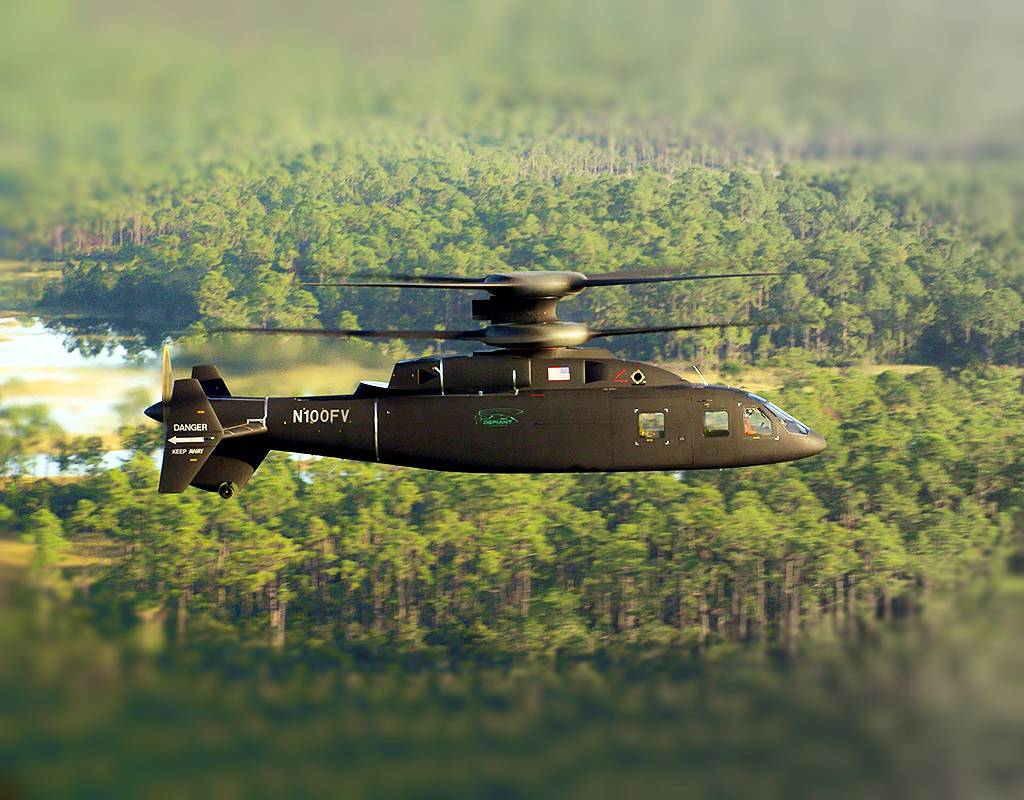
With plenty of power in reserve, the SB>1 Defiant this week reached 232 knots in a dive, and inched closer to the U.S. Army’s threshold maximum cruise speed for a Future Long Range Assault Aircraft (FLRAA).
In an Oct. 12 flight, with two-thirds torque on its aft pusher prop and two-thirds engine power, the compound coaxial helicopter achieved 211 knots in straight-and-level flight and 232 knots during a descent, according to the Sikorsky-Boeing team that built the aircraft.
“The Sikorsky-Boeing team continues to make great progress as we advance Defiant’s rigorous flight test program,” the team said in a statement. “With every flight, as we continue to increase Defiant’s speed, angle of bank and rate of climb, we are gathering important data, expanding our speed and maneuverability envelope and validating our modeling and simulation tools.”
Defiant first flew in March 2019. It hit 205 knots in forward, level flight with half the power from its twin Honeywell T55 engines in June.
Data gathered from the Defiant’s propulsion system test bed (PTSB) indicates the 30,000-pound Defiant should readily achieve speeds that “well exceed” 200 knots, up to and above 250 knots, chief test pilot Bill Fell said in June. The aircraft is flying about once a week and the envelope is being expanded in 20-knot increments.
“Together, Sikorsky and Boeing provide nearly 90 percent of the aircraft in the Army’s inventory today, and we understand how tomorrow’s multi-domain operations require aircraft that provide survivability, agility and speed — where it matters,” said Andy Adams, vice president of Sikorsky Future Vertical Lift. “That’s why we’re planning ahead with continued flight testing, refining our designs to specifically match the Army’s requirements, and building a weapon system that will give the Army transformational capability with unsurpassed training and sustainment capabilities — giving our soldiers what they need to achieve aviation overmatch for the next 40 years.”
The Army is in the process of firming up requirements for FLRAA, which will eventually replace the UH-60 Black Hawk helicopter when it comes online after 2030. Development documents suggest it should have a maximum continuous cruise speed of at least 250 knots with a desired top speed of 280 knots.
Defiant’s sole competitor for FLRAA is Bell’s V-280 Valor advanced tiltrotor, which has flown 300 knots in level flight and has been airborne significantly longer. In 150 flights over the past three years, Valor has racked up 190 flight hours, according to Frank Lazzara, Bell’s director of Sales & Strategy for Bell’s Advanced Vertical Lift Systems.
Both companies are under contract for a competitive demonstration and risk reduction phase of the FLRAA program. Under the agreements, each company will produce initial conceptual designs, requirements feasibility, and trade studies using model based systems engineering. These CD&RR agreements will extend over two years, informing the final Army requirements and the program of record planned for competition in 2022.



